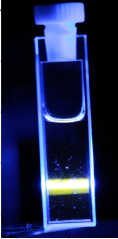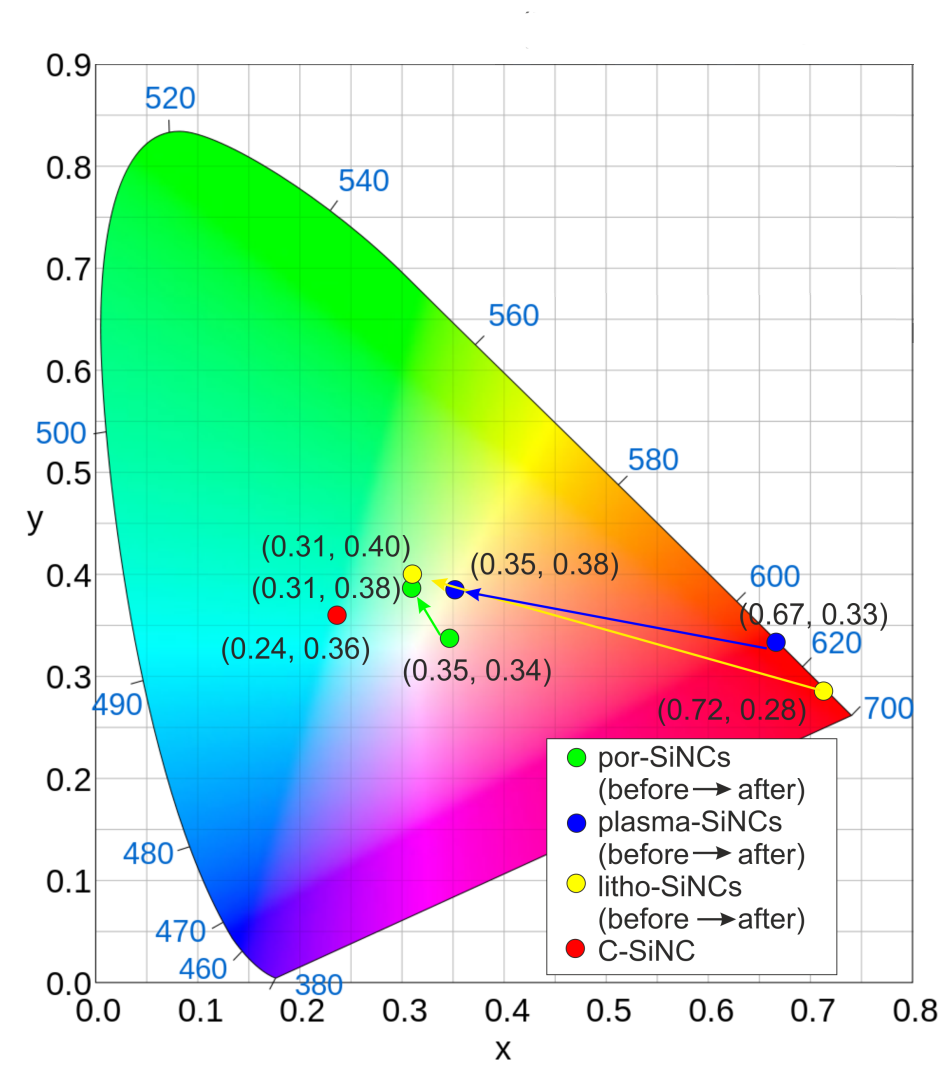Silicon nanocrystals are promising materials for optical, electronic, medical and renewable energy applications. However, different synthesis techniques produce very different light emission characteristics, usually with low efficiencies. In Nature Light, Ilker Dogan and colleagues demonstrate a technique to turn any silicon nanocrystal into a white light emitter. By deliberately creating defects in nanocrystals, the team managed to create light emission centres which combine to produce a warm-white photoluminescence.

tuned to produce
warm-white light
Article
Benjamin Bruhn, Benjamin JM Brenny, Sidoeri Dekker, i [368] dogan [18] differ [368] nl (Ilker Dogan), Peter Schall and Katerina Dohnalova, Multi-chromatic silicon nanocrystals (pdf)
Light: Science & Applications - doi: 10.1038/l sa .2017. 7
Silicon nanocrystals have unique physical and chemical properties which depend strongly on the size of the particle. This tunable behavior makes them promising materials for applications. A big challenge is controlling the exact properties of the nanocrystals that come out of the synthesis process. Porous, plasma-synthesized, lithography-created or organically-capped silicon nanocrystals have widely diverging luminescence characteristics. "If you can convert silicon nanocrystals into an efficient white color phosphor (light emitting material - editor), you can use them to replace heavy metal containing toxic nanocrystals like CdSe, which are being used for their highly efficient emission characteristics", says co-author Ilker Dogan (DIFFER).
Harnessing defects
In their publication in Nature Light, Ilker Dogan and his colleagues at the Van der Waals-Zeeman Institute, AMOLF and Eindhoven University of Technology, show how they can get the desired light emission out of any type of silicon nanocrystal. Paradoxically, their approach to controlled light emission works by first deliberately creating defects in the silicon nanocrystals with an electron beam. The impact of fast electrons creates defects in the oxide shell surrounding each nanoparticle. These sites can then be stimulated to produce red, green and blue light, which combines into warm-white light.

by purposefully creating defects in that act as
selective absorbers and emitters of light
The findings from this study are a big step towards realizing stable, energy efficient, environmentally friendly while-lighting applications, for instance white LEDs, and display technologies. On the other hand, white light phosphors can be used as solar spectrum absorbers for improved utilization of the light in solar cells.
Silicon nanocrystals: from solar panels to light emission and absorption
Plasma synthesized silicon nanocrystals were studied by Ilker Dogan as a part of Joint Solar Panel. His PhD study (2009-2013) focused on advanced photon management concepts in solar cells using silicon nanocrystals to convert high energy photons into multiple low energy photons (down conversion) to be absorbed by the solar cell. Later, a grant from HTSM together with Meyerburger allowed him to investigate the potential of using silicon nanocrystals as high capacity anodes for lithium-ion batteries. In this study, these plasma synthesized silicon nanocrystals are demonstrated as white light emitters, indicating their optical quality as a white phosphor, but also its potential to be used as a solar spectrum absorber.
Go to the News page.